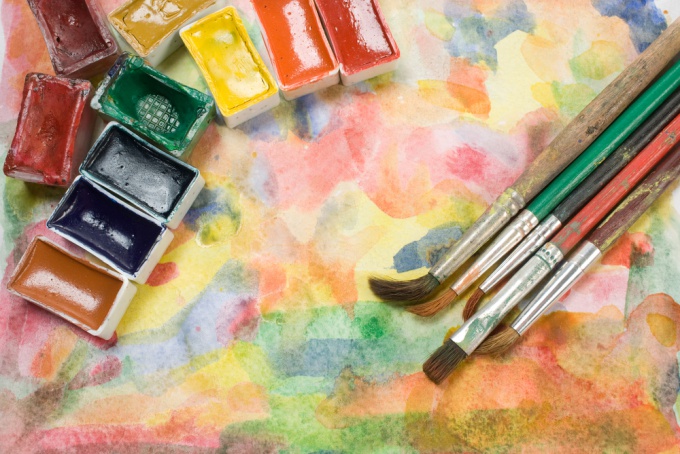Primarily, purchase quality materials and tools. Good watercolor paints are expensive, but not necessarily to buy from large sets. To start, you need two squirrel brush — 3-5 mm for small parts and 1 cm for the background. The brush should be soft, wet to form a sharp tip. You can take another flat hard brush, which is convenient to remove excess paint. Paper for watercolor should be dense, with a pronounced texture. Paint-mixing fit a plastic palette, which the cells in front of the work necessary to process an emery paper to paint them, not pushed.
Before you start painting, pin the paper on a flat surface. Prepare surround the jar with clean water and a soft cloth, you can wet the brush.
Mark the outline of the drawing thin pencil lines. As in watercolor, no white paint, just determine what places need to be left clean. Some artists suggest before you apply the paint, rinse the leaf under running water to remove remains of graphite, dust and greasy stains.
To paint with watercolors you need from top to bottom. First draw the background, and when it dries, you can proceed to the details. To work on the background, dial in a big brush paint, well diluted with water, and horizontal movements to walk on the paper. Diluting the paint, remember that watercolor is lightened after drying. Do not apply more than three coats of paint, otherwise lost the transparency, and appreciate watercolor.
For drawing details dip the tip of a thin brush into the paint and draw, holding the brush vertically.
Practice to wash the top layer of paint with a stiff brush moistened with water. This will help the image look pale or translucent objects. Clouds are good at it, if you blur the background of a great clean wet brush. If you made a mistake somewhere, under running water to easily wash off the paint at a particular site. Dried watercolor it does not suffer greatly.
Experiment with colors and different ways of drawing, and very soon you will develop your own special style.
